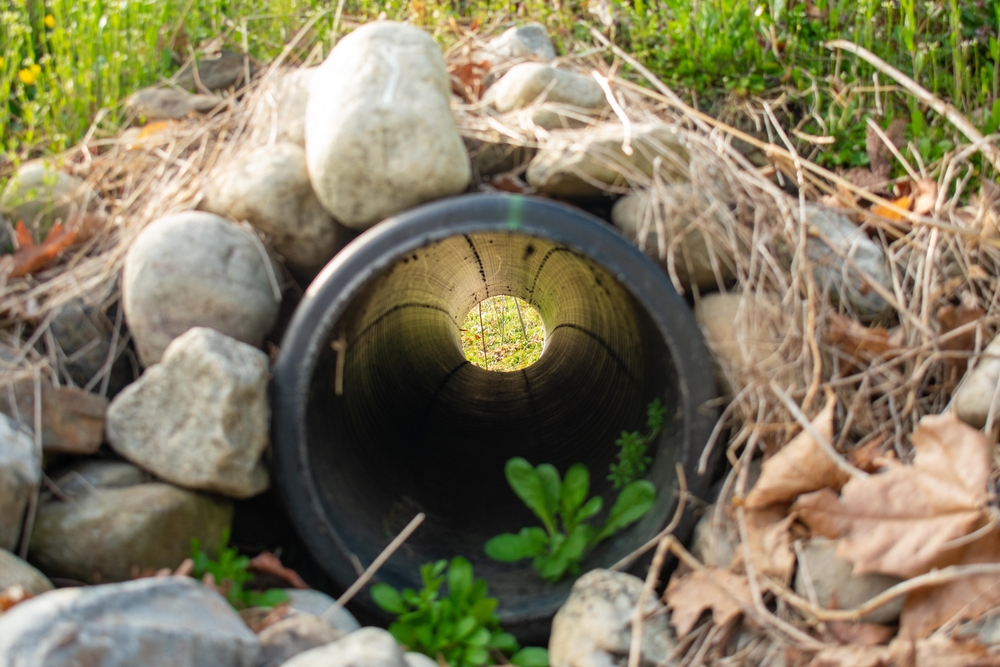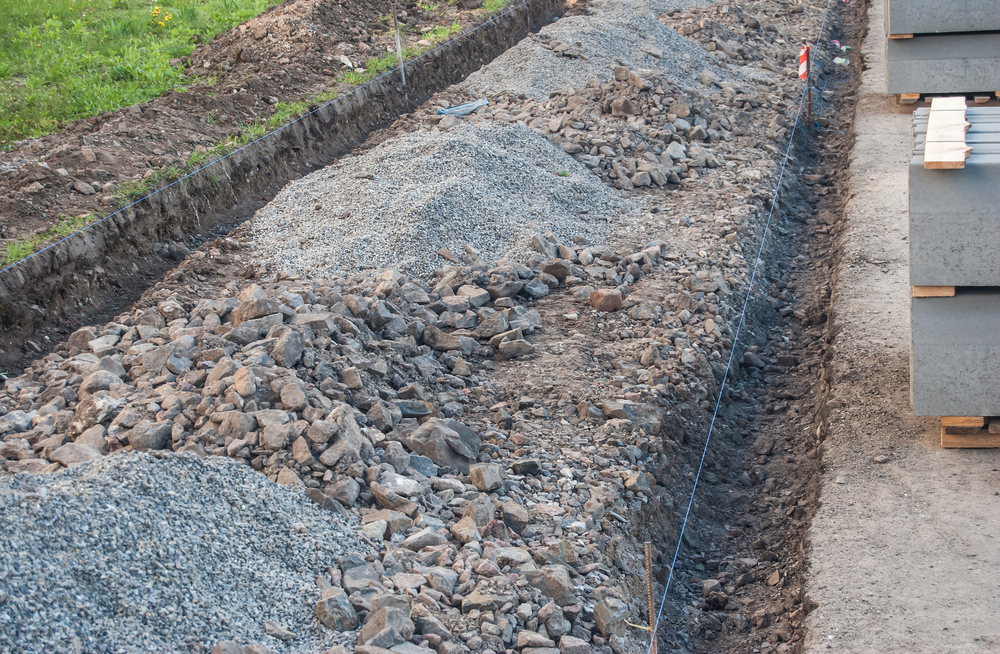What are the Benefits of a French Drain
Got a flooding or drainage problem? No worries, the famous French drain is here proposing to you the drainage solution you're looking for.
A French drain is a drainage system that consists of a trench filled with gravel and a perforated pipe that helps redirect surface water flow away from an area. While you might be familiar with catch basins that capture large amounts of rainfall, French drains are long trenches that collect the runoff and channel it downhill.
The French drain system is the ideal solution for protecting your property or house foundation. Similar to the curtain drain, it's commonly used to improve drainage to prevent flooding and water damage in basements and to alleviate wet spots in yards. It's for these reasons that this flexible drainage pipe also has the interior french drain option for similar indoor flooding problems.

There are many benefits of installing a French drain, which include:
- Reducing basement flooding – A French drain can help reduce the amount of water that enters your basement by directing excess water away from the foundation and into the drain.
- Preventing yard flooding – If you have an issue with standing water in your yard, a French drain can help collect and redirect the water away from the problem area.
- Eliminating wet spots – Wet spots in your yard can be unsightly and make it difficult to mow or walk through the area. A French drain pipe can help dry out these areas by collecting and redirecting water.
- Minimizing soil erosion – Soil erosion can occur when rainwater runs off of your property line without being absorbed into the ground. This can cause significant damage to your landscaping. A French drain helps reduce soil erosion by collecting and redirecting runoff water after heavy rain.
French Drain Installation Steps
Step One: Dig a Trench
The first step to installing your French drainage system is to dig a trench. You'll want to make a six-inch wide trench and dig about eighteen inches deep. The depth of the trench will depend on the soil type in your yard. If you have sandy soil, you may only need to dig a linear foot deep, but if you have clay soil, you may need to go as deep as twenty-four inches.
To dig the length of the trench, you can use a shovel or rent a power trencher. If you're using a shovel, be sure to use a spade bit for turning the sod over and removing it from the trench. Once you've removed the sod, use a garden hose or string to outline the path of the trench.
If you're renting a power trencher, outline the path of the trench with spray paint or flags so that you can easily see where to dig.
As you're digging, make sure that the terrain and drainage line is running a downward slope at a fourth of an inch per foot to facilitate the steady flow of water.

Step Two: Fill the Trench with Gravel
The next step is to fill the trench you just dug with gravel. You'll want to use coarse gravel that's at least a quarter of an inch in diameter—larger stones will eventually settle and clog your drainpipe. Aim for a layer of gravel that is about eight inches deep in the bottom of your trench.
If your French drain will be running next to your foundation, driveway, or patio, you'll want to line the sides of the trench with filter landscape fabric before adding gravel. This fabric will keep dirt and silt from washing into your gravel and clogging your pipe.
To install the fabric, lay it over the sides of the trench so that it hangs down into the hole about six inches. Use landscaping staples or nails every few feet along both sides of the fabric to secure it in place.
Step Three: Install The Pipe
Once you've added gravel (and fabric if necessary ), it's time to pipe. There are two common types of pipe used for French drains: perforated drain pipe and solid PVC. If water is already pooling in your yard, opt for perforated PVC; this type of pipe has small holes that allow water to pass through as it moves downslope. You'll also want to make sure the holes are facing down so that the water collects quickly and doesn't exit the top of the trench pipe when full.
It's worth noting that since solid PVC doesn't have any holes, it's best suited for drainage areas that are usually dry but experience occasional flooding. No matter which type of pipe you choose, make sure it's rated for underground use as regular PVC pipe won't stand up to rainwater and moisture over time.
To install the pipe, simply lay it into the bottom of the trench on top of gravel( no need to glue or secure it unless local codes require it). Center the pipe in the middle of the trench as much as possible so that water will flow evenly through all of the holes.

Step Four: Cover the Pipe
Once you have the pipe in place, it's time to cover it with gravel. You'll want to use the same coarse gravel that you used in the bottom of the trench, and you'll want to fill the trench all the way to the top. Make sure that the gravel is evenly distributed around the pipe so that water can flow freely through it.
If you're using filter fabric, tuck it over the top of the pipe before adding gravel to help keep dirt and silt from washing into your drainpipe.
Step Five: Backfill the Trench
After you've added gravel around the pipe, it's time to backfill the trench. You'll want to use soil or sand that is clean and free of debris. Fill in the trench a little bit at a time, compacting as you go so that there are no air pockets around the pipe. Once you've filled in the entire trench, tamp down any remaining bumps or dips so that water will flow smoothly over your French drain.
Once again, if you're using filter fabric, make sure that it's fully covered with soil or sand before you replant grass over the area.
Maintaining Your French Drain
Inspecting Your French Drain
It is crucial to inspect your French drain regularly to ensure that it is functioning properly. You should look for any signs of clogging, leaks, or other damage. If you notice any problems, you should call a professional to have the drain repaired or replaced.
Cleaning Your French Drain
You can clean your French drain by flushing it with water from a hose. You can also use a plunger to clear any clogs that may have formed in the drain. If your drain is severely clogged, you may need to call a professional to have it cleaned or repaired.
Conclusion
If you're looking to improve the drainage around your home, a French drain could be the solution you're looking for. They're not a big installation job, and they're relatively simple if you want to do it yourself. On top of this, they're also low maintenance and can be customized to fit your specific needs.
It's also good to know for budgeting that French drain cost starts at about 500 dollars which falls in most people's budgets and can be the right solution for serious drainage problems.
When installing a French drain, there are a few key steps to remember: dig a trench, fill it with gravel, add the pipe, cover the pipe, and backfill the trench. It's that simple. The only thing left after is to maintain your French drain by inspecting it regularly and keeping it clean.
